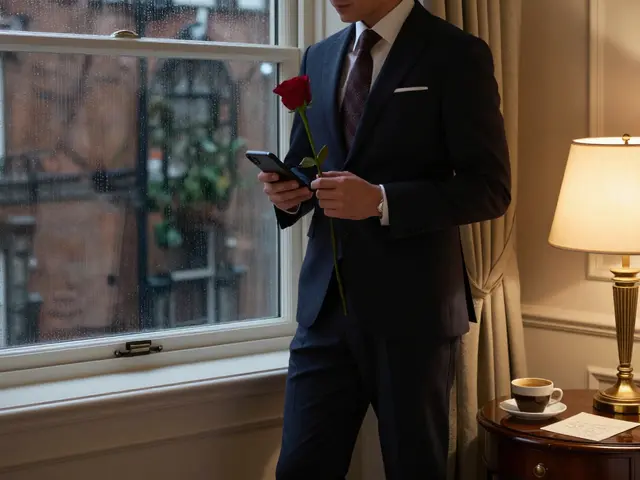Ever had someone ask if you could "just hop on a quick call" or "look over something" for free? You're not alone. For anyone in consulting, freelancing, or pretty much any service business, this situation pops up again and again. It feels awkward, because deep down you want to be helpful—but you also know your time isn't free.
Here's the thing: seeing a client for free can open doors. Tons of businesses use short free consultations as a way to land more paying gigs, build trust, or test if a new client is a good fit. But it's not all upside. Sometimes, free sessions turn into time drains or train people to undervalue what you offer.
So, what makes a free meeting smart—and when does it cross the line into working for nothing? The answer isn’t one-size-fits-all. You’ve got to weigh your experience, the client’s attitude, and your gut feeling. The more you understand what's really going on—whether it's an investment in future work or just someone looking for free advice—the easier it is to call the shots.
- Why Professionals Offer Free Sessions
- Fresh Starts or Free Labor: Weighing the Risks
- How Free Consultations Can Backfire
- When It Pays Off to Work for Free
- Boundaries: Setting Limits Without Guilt
- Turning Free Meetings Into Real Business
Why Professionals Offer Free Sessions
Think of free sessions as samples at the grocery store. Folks get a taste of what you do without any commitment. Lots of professionals—freelancers, therapists, consultants, even lawyers—use this move, especially when starting out or trying to drill into a new market.
There's solid data behind this. According to a 2023 survey by HubSpot, 59% of consultants say offering a free first meeting led to more paying clients. Why? It builds trust. People want to know who they're dealing with before handing over cash. They need proof that you're legit and worth the investment.
Free consultations are also a way to weed out clients who aren't a fit. You get to suss out their vibe, talk through their needs, and figure out if you can actually help. This quick meeting can save everyone time—and stops you from diving into a project that’s a total mismatch.
Another thing: competition. Loads of folks in your field offer free intros, so skipping it might mean losing out. Plus, people have gotten used to "try before you buy" deals, not just for products, but for services too.
- Show off your expertise before asking for payment
- Build trust and credibility—with cold leads especially
- Screen out high-maintenance or unqualified clients early
- Keep up with competitors who also offer freebies
Remember, giving away a taste of your work doesn't mean giving away everything. A free session is just that—a quick sample, not a whole project. Handled right, it can turn a "maybe" into a loyal client who actually values your see a client for free offer as a smart, no-pressure intro to what you bring to the table.
Fresh Starts or Free Labor: Weighing the Risks
There’s a big difference between kicking off new relationships and signing yourself up for unpaid work that goes nowhere. Sure, some big names—think lawyers or financial advisors—give a first meeting at no charge, but they set firm time limits and make it clear this isn’t a work session.
You might hope a free intro will land you future business, but stats tell another story. According to a 2023 survey by HubSpot, only 28% of consultants said their free meetings reliably led to paid work. That’s not a great payoff if you’re spending hours on "sample" work.
The real problem? Some people will take whatever they can get. They may even disappear after getting your best advice. Demand for free help comes with the territory, but it often signals that someone didn’t plan a budget for your service.
As business author Chris Do says:
“You never want to train someone that your time or expertise is valueless. People respect what they invest in.”
A good way to spot the difference between a new opportunity and free labor is to ask yourself:
- Is this client likely to bring repeat or higher-value business soon?
- Does this client have a reputation for hiring professionals or do they hop from freebie to freebie?
- Is the request reasonable (like a short Q&A) or are they asking for full-on project work?
If your gut is telling you this is just another "quick favor," it probably is. Setting boundaries early on isn’t just smart—it protects your energy, reputation, and the value people place on seeing a client for free.
How Free Consultations Can Backfire
Sometimes those no-strings-attached meetings aren’t harmless. Offering free consultations can actually cost you more than you realize. If you’re not careful, you end up handing over valuable knowledge and tiring yourself out without seeing any real return. Let’s break down some of the ways this can go sideways.
Free consultations can create the wrong expectations. Once people get used to freebies, they might expect everything else to be complimentary, too. According to a 2024 survey by FreshBooks, 52% of freelancers said free meetings made it tougher to negotiate their normal rates afterward.
As Bri Seeley, business coach for service providers, puts it: “Clients who don’t pay for initial meetings are far less likely to invest in your actual service—if they’re getting value for free, why pay at all?”
It’s not just about missed payments. Some folks just want to pick your brain, never intending to actually work with you. That’s time you’ll never get back—time that could go to real paying clients, if you had drawn a line earlier.
Here’s a quick look at the main pitfalls:
- People mistake generosity for weakness—and start expecting discounts or extra freebies down the road.
- Makeshift “consultations” sometimes turn into hour-long advice dumps without ever turning into business.
- You could run into scope creep, where your original free minutes turn into extra work you did not sign up for.
- It disrupts your schedule, making it harder to focus on high-value work.
Just to put numbers to it, check out this table showing what can happen if you do too many no-charge sessions:
| Meetings per Month | Avg. Time per Call (min) | Total Free Hours | Potential Earnings Lost (at $75/hr) |
|---|---|---|---|
| 2 | 30 | 1 | $75 |
| 8 | 30 | 4 | $300 |
| 16 | 30 | 8 | $600 |
As you can see, it adds up quickly. Even a handful of half-hour chats can mean hundreds of dollars left on the table every month.

When It Pays Off to Work for Free
Sometimes, working for free is actually a smart move—if you know when and why you’re doing it. The key isn’t just saying yes to every "freebie" request, but spotting the moments where a little generosity can turn into serious business growth down the line.
First off, free sessions are often the norm for brand-new businesses or when you’re switching industries. Offering a free consultation can get your foot in the door with people who wouldn’t risk spending money on a stranger. Big names like HubSpot and LinkedIn built their brands partly by dishing out loads of free value upfront, drawing users in before pitching any paid offer. It works because people get a taste of what you can do, and trust grows fast when results are obvious.
This strategy can also make sense when you’re working with someone who brings loads of visibility. Think: a high-profile client, a charity with connections, or a well-known local group. If your name gets mentioned in the right crowd, that free gig can lead to real referrals or press—sometimes faster than paid gigs do. Just make sure it’s not a dead-end; check if they actually help others find you, not just keep you as a secret weapon.
Free work can also open doors for learning or building your portfolio. Plenty of coders and designers take on a few solid unpaid projects in the beginning, because those early samples work like gold when you’re pitching bigger jobs. According to a 2023 Upwork survey, almost 25% of freelancers said they landed their first major client because they showed off results from an unpaid project.
- If you're launching a new service, giving a few free sessions often lets you gather testimonials and get honest feedback.
- When a potential client is "on the fence," a short, clear taste of your style can help push them to sign a bigger deal.
- Nonprofits or causes that actually matter to you can boost your network, teach you new skills, and sometimes lead to surprising leads.
Here’s the bottom line: offering to see a client for free should be a tool, not the default. Use it on your terms, when you see a real path to learning, portfolio building, great exposure, or future money—not just because someone asks nicely.
Boundaries: Setting Limits Without Guilt
Saying no to free requests can feel pushy at first, but you’ve got to protect your business and your mental sanity. There’s no shame in putting a price on your time—none at all. In fact, smart boundaries are what separates steady, sustainable work from burnout.
A common move is to set expectations early. For instance, if you do offer initial free chats, keep them short and clear, like a 15-minute call with a set agenda. When someone starts asking for more, politely let them know what’s covered for free and what requires a paid session. You can always say, “Here’s how I usually work: I offer quick discovery calls, but anything in-depth is part of my paid services.” Simple and firm.
It also helps to have a see a client for free policy laid out in your onboarding emails or website. This way, it doesn’t come as a surprise when you re-direct freebie-seekers to your paid options. According to data from FreshBooks in 2024, pros who set written boundaries were 35% more likely to report less time wasted on non-paying leads. That’s a move worth copying.
If dropping the hammer feels tough, try practicing a few scripts. Here are some lines you can keep in your back pocket:
- "I’m glad you reached out! I offer a complimentary intro call to see if we’re a fit. For detailed advice, I charge X per hour."
- "I’d love to help. After our free consult, I offer paid sessions where we dive deeper into your problem."
Remember, good clients respect your boundaries. The ones who argue are usually the ones you want to avoid anyway. The more you say no without guilt, the more room you’ll have for real, paying work.
Turning Free Meetings Into Real Business
Let’s face it, no one wants to hand out hours of their time with nothing to show for it. If you’re offering a free session, think of it as a pitch, not just a favor. The real win is when that free meeting leads to a paid relationship. Here’s how people actually make that happen:
- Set clear goals: Don’t wander through small talk. Start with a clear outline—three takeaways or action points. Make it obvious that you know your stuff, and show value right away.
- Timebox it: Never say “however long you need.” A 15- or 30-minute block sends a signal that your schedule (and your expertise) is valuable.
- Prep some case studies: Share a quick example showing how you solved a problem like theirs. Real success stories pique interest way more than generic advice.
- Have a simple next step ready: Don’t leave things hanging. Mention how you’d approach the project and what happens next—like a proposal or specific package.
- Send a follow-up: After your chat, shoot them a short email. Recap the big points, gently drop your rates or booking link, and invite questions.
Here’s a peek at what professionals are getting out of these sessions, according to a 2023 survey by Upwork:
| Outcome of Free Consultation | Percentage of Respondents |
|---|---|
| Secured Paid Project | 41% |
| Ongoing Client Relationship | 28% |
| No Further Contact | 22% |
| Negative Experience (e.g., scope creep) | 9% |
The main see a client for free tip: Always tie your free meetings to a business outcome. Otherwise, you risk becoming everyone’s unpaid helper. Ask yourself—did my meeting get me closer to a real deal, or just cost me time?




